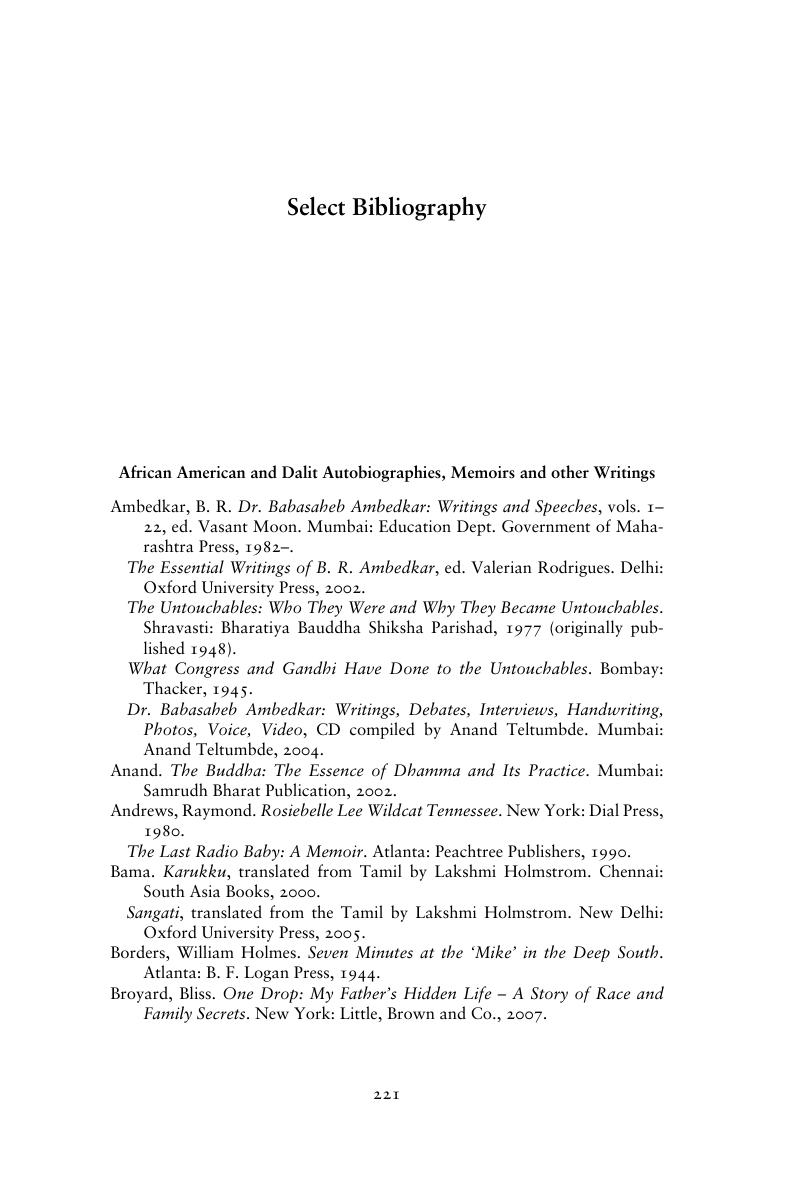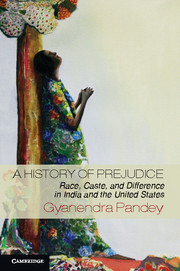Select Bibliography
Published online by Cambridge University Press: 05 February 2013
Summary

- Type
- Chapter
- Information
- A History of PrejudiceRace, Caste, and Difference in India and the United States, pp. 221 - 232Publisher: Cambridge University PressPrint publication year: 2013

